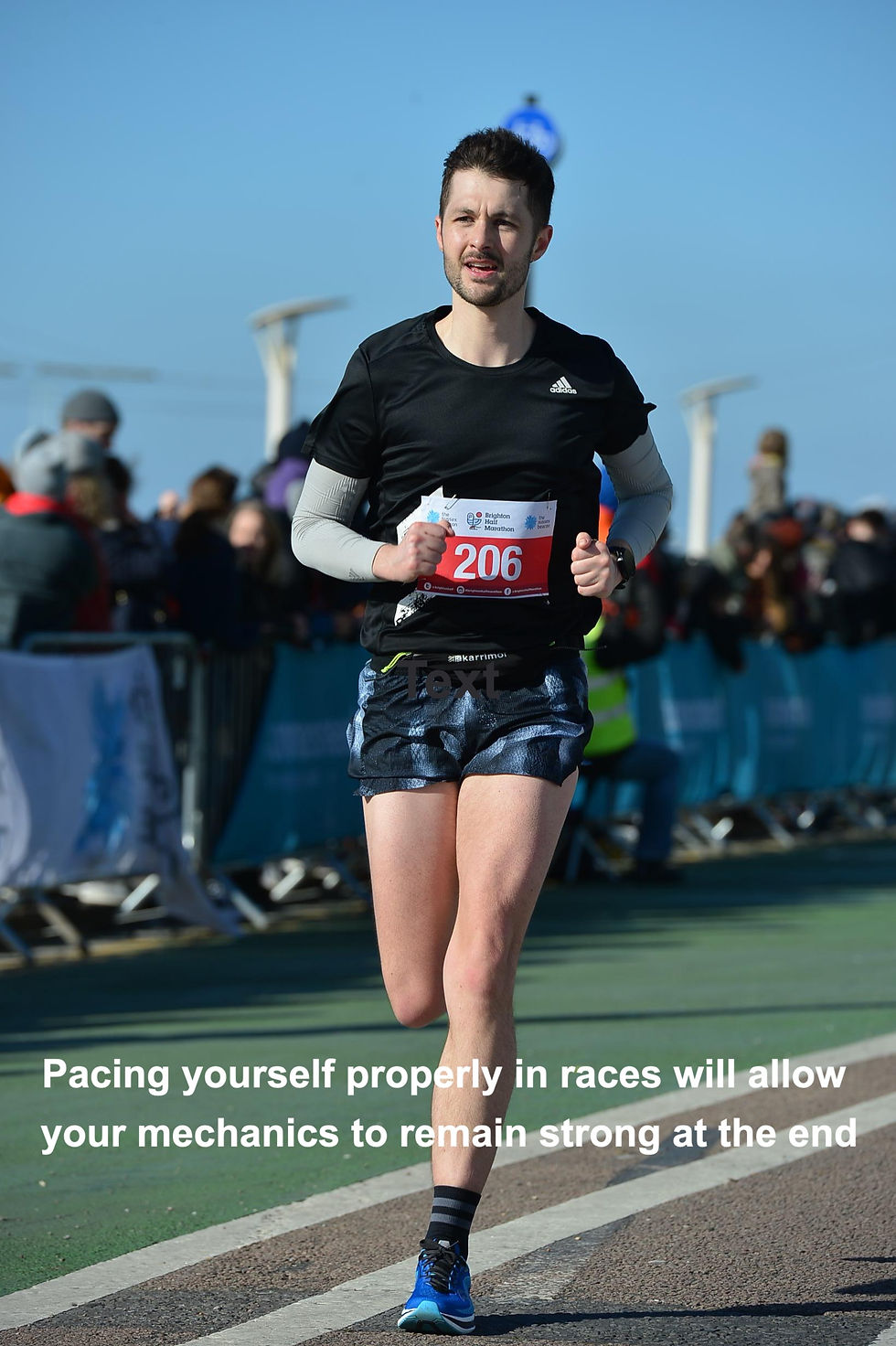Think of most sports and you’ll often see that there is proper and improper technique, ideally to be taught to new-starters from day one, with the ability to consistently execute exemplary technique one thing that marks out professionals from amateurs. Tennis and swimming would be good examples. And yet, for some reason with running it’s pretty common for even experienced runners to have not put a single bit of thought into how they move at all. When I was working in running stores the topic would often come up and the common response was ‘oh - I just run how I run’. Is it any wonder then that runners are so often injured? Learning to run with better technique can be pretty transformative for your chances of injury.

But not only that: proper technique improves running efficiency, in others words lowering the energy cost of running. What’s the point in all that fitness training if your technique is so inefficient it costs you masses of precious energy to push yourself down the road? Imagine two cloned, identical runners on the start line of a race. Everything about them is the same - including their fitness, training, psychological strength, bodily proportions, suppleness, intrinsic motivation - except how they run. The one with the more effective style will surely win, as they’ll be able to run at the same speed as their friend whilst using less energy.

Simply put, there are clear fundamentals that should be implemented from the first day you start your running journey. So, to both improve performance and decrease chances of injury, I’m calling on to you keep in mind, and actively work on, these key ideas:
Land quietly, with the foot underneath you, rather than out in front. Think: quick, light, rolling feet
Pretend you are rolling over the ground rather than bounding from foot to foot
Keep a fast cadence (steps per minute) to reduce time in the air, and therefore landing shock
Run tall, relaxed and balanced with loose shoulders
Lean forward gently from the ankles, rather than the waist
You should have the subtle feeling that you’d fall forward if you didn’t hurry up and take the next step
Hold your head straight and still, with eyes focused on the ground at least ten metres in front
Drive the knees/feet upwards and forwards rather than ‘shuffling’ across the ground with scuffing feet
Any significant changes to your running pattern should be done carefully and gradually, whilst listening to the body.
Comments